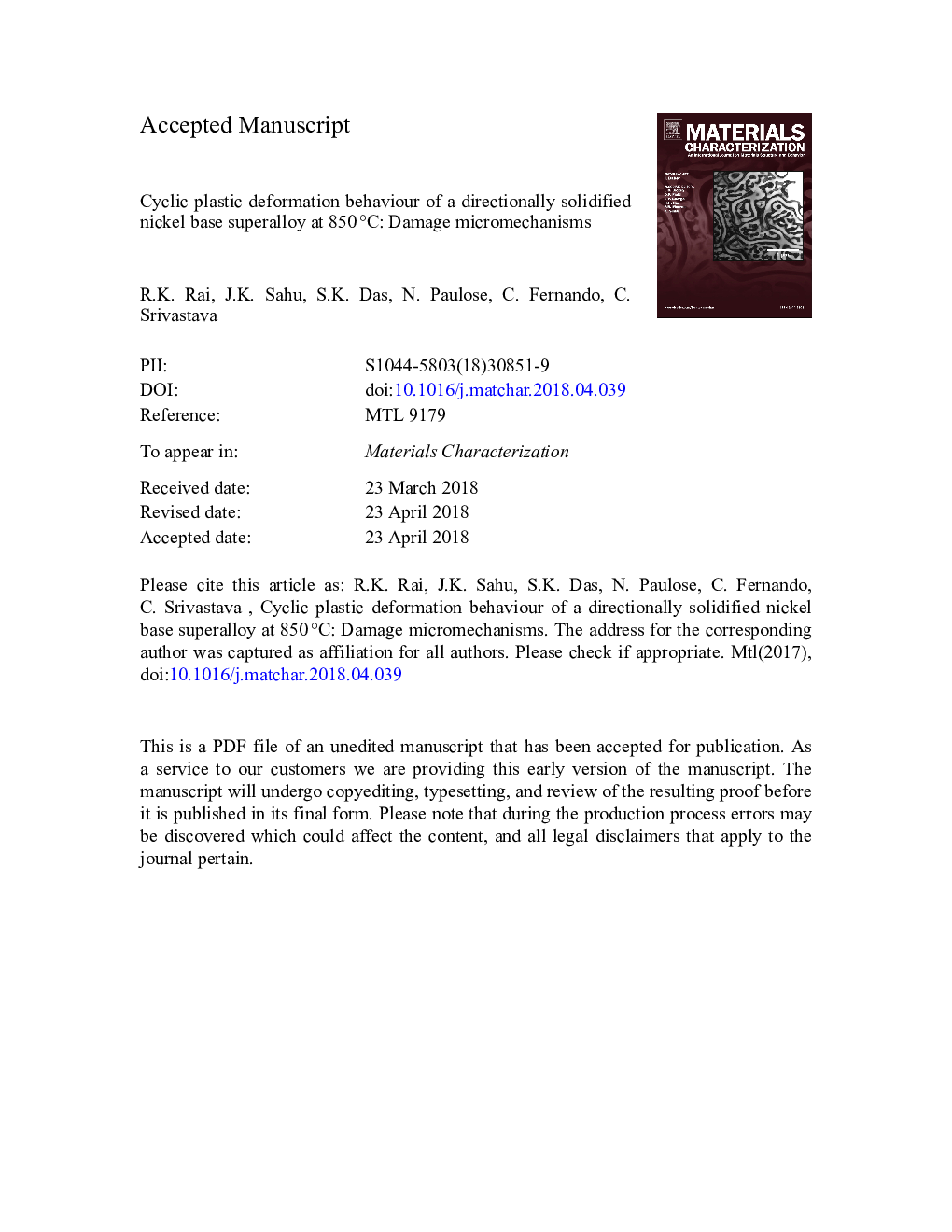| Article ID | Journal | Published Year | Pages | File Type |
|---|---|---|---|---|
| 7969079 | Materials Characterization | 2018 | 31 Pages |
Abstract
Dislocation based deformation micromechanisms during low cycle fatigue deformation of nickel base superalloy CM 247 DS LC at 850â¯Â°C was investigated by conducting fatigue tests employing constant strain amplitudes for strain ratio (R) values of 0, â1 and carrying out extensive SEM and TEM examinations. Cyclic life of the alloy reduces for all fatigue tests conducted employing Râ¯=â¯0 in comparison with Râ¯=â¯â1 owing to sustained mean stress developed during fatigue at Râ¯=â¯0. TEM examinations confirmed that sustained mean stress developed during low strain amplitude fatigue test (Îε/2â¯=â¯0.5%) using Râ¯=â¯0 condition prevented slip transfer from γ-channels to γâ²-precipitates and resulted in the formation of dislocation substructures such as networks, nodes etc. and also promoted dislocation looping around γâ²-precipitates. Lower fatigue life at Râ¯=â¯0 is mainly attributed to the development of these types of substructures, which promotes strain localization in both intra as well intergranular regions. Whereas, in specimen fatigue tested (Îε/2â¯=â¯0.5%) using Râ¯=â¯â1 condition, shearing of γâ²-precipitates by APB coupled dislocation and formation of stacking faults were observed. The formation and nature of stacking faults were analysed using weak beam imaging technique. Stacking fault formed during fatigue tests using Râ¯=â¯â1 condition matured to micro-twins when Îε/2 value was increased to 0.8%. The mechanism of formation of these microtwins is discussed in detail. SEM based microstructural and fractographic examinations revealed that mean stress induced creep effect resulted in intergranular crack initiation and grain boundary cavitation during fatigue tests under Râ¯=â¯0 condition and therefore verified the facts revealed in TEM studies.
Related Topics
Physical Sciences and Engineering
Materials Science
Materials Science (General)
Authors
R.K. Rai, J.K. Sahu, S.K. Das, N. Paulose, D.C. Fernando, C. Srivastava,
